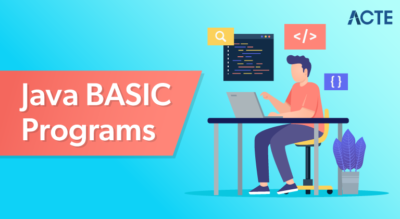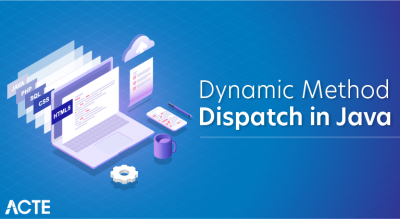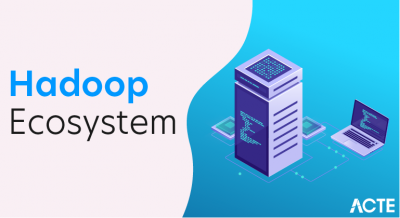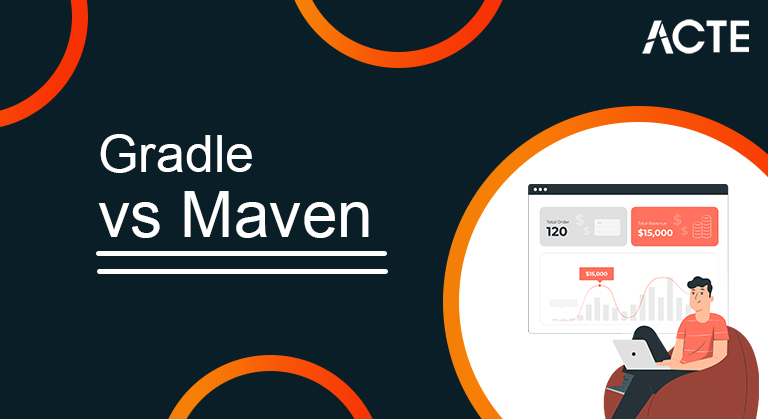
Gradle is a build automation tool that is an open-source and builds based on the concepts of Apache Maven and Apache Ant. Both are able to cache dependencies locally and download them in parallel. As a library consumer, Maven allows one to override a dependency, but only by version. Gradle provides customizable dependency selection and substitution rules that can be declared once and handle unwanted dependencies project-wide.
- Introduction to Gradle & Maven
- Key Differences Between Gradle and Maven
- Features of gradle and maven
- Gradle vs Maven: Performance Comparison
- Code Examples
- How To choose
- Gradle vs. Maven
- Benefits of Gradle and maven
- Conclusion
Introduction to Gradle & Maven:
Gradle is one in every of many building tools obtainable in Java, however it’s not the sole machine-driven building tool to contemplate. wizard is Associate in Nursing, a recent and widely used technique, however any building program is true for our project and alternative Java structures, like Spring, Hibernate. It’s tough to work out which tool is best to use once each tool area unit is combined with a growing range of mixtures. Let’s discuss which tools are best for our needs.
Gradle is Associate in Nursing ASCII text file machine-driven construction tool and builds on the concepts of Apache wizard and Apache pismire. It will build virtually any style of computer code. it’s designed for the development of the many comes, which may be quite massive. Introduce Java-based subscriber line and Groovy (Domain Specific Language) rather than XML (Extended Language) to announce project configuration. It uses DAG (Directed Acyclic Graph) to outline performance. Gradle provides an expandable model which will facilitate the life cycle of development in compilation and packaging of internet codes and mobile applications.
Gradle provides building support, testing, and computer code delivery across a range of platforms. Designed to make dynamic trilingual and forum layouts, together with Java, Scala, Android, C / C ++, and Groovy. It’s a political candidate building tool for mechanical men. Gradle provides integration with many development tools and servers, together with Eclipse, IntelliJ, Jenkins, and mechanical man Studio.
Maven is an Associate in Nursing open supply computer code project management tool used primarily for Java. It can even be used for alternative applications like C #Ruby, Scala, and more. The Apache computer code base manages the wizard. The wizard discusses 2 key aspects of computer code development; dependence, and the way the computer code is made. Within the wizard, XML File describes the development method of a project, its dependencies, components, and alternative external modules. There area unit pre-defined targets for tasks like packing and packaging.
The project structure will be mechanically created during a short amount of your time as the wizard uses a regular directory layout and an automatic life cycle that helps build the project during a short quantity of your time. If there are multiple development groups, wizard will operate during a normal format during a short amount of your time.
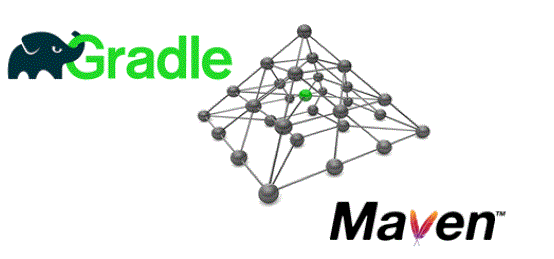
- Gradle may be a computer code development tool that wants to build new computer code. The computer code that may be created within the Gradle tool is predicated on java programing language. The Gradle tool is provided as associate degree open supply tool provided freed from charge to developers.
- The Gradle tool uses the ideas of Apache hymenopterous insect and Apache genius in its configuration. This tool additionally helps to make different types of computer code in the Java language. The most use of the Gradle tool is to make an outsized computer code size that needs extra configuration.
- Project configuration employed in the Gradle Groovy and Java tool, that replaces the growing descriptive linguistics. Computer code applications designed to form the tool are of any kind, like mechanical man or web-based applications.
- The Gradle tool supports a range of computer code development platforms associated with degreed testing computer code in an integrated setting. The programming language used for computer code development functions in Java, C, Scala, C ++, Android, and Groovy.
- The IDE used for computer code development is Eclipse, mechanical man Studio, and Jenkins. The performance of the Gradle tool is quicker compared to the genius tool as a result of the Gradle tool doesn’t track the input perform and therefore the output perform. The tool solely tracks active activity that is modified throughout the project development method.
- The Gradle tool has the superimposed advantage of getting the tool to use the project output created earlier within the Gradle tool. The sole demand is that the input ought to stay constant, that helps to cut back the time to make the project.
- Maven is another style of computer code development tool that additionally wants to produce multiple forms of computer code, that helps programmers to develop computer code. It’s the framework of the life cycle of the editorial project, and therefore the tool is associate degree open supply for developers.
- The genius tool is widely employed in JAVA language-based comes. Another programing language that may be wont to produce computer code is Scala, C # and Ruby. The genius tool takes care of the computer code development method, which mixes 2 forms of options, the computer code build method and therefore the dependency.
- of computer code. Within the genius tool, an associate degree XML file is employed that deals with project construction steps, all project dependencies, project modules and different project elements. All of this is often enclosed within the XML go in the genius automation tool.
- The project creation time in the genius tool is brief compared to the Gradle tool because the genius tool uses machine-driven style and general indicator, which helps to cut back project creation time. The dependency modules used for genius tool computer code development square measure well maintained so the computer code is simply developed and in a very short quantity of your time.
- The genius tool manages customary libraries, which may be employed in project construction, and therefore the aforesaid work is created in keeping with the genius such standards.
- The genius tool supports the installation of latest plugins and supports the life cycle method of making a project. As comes square measure done victimisation the genius tool, the debugging method is less complicated within the genius tool than within the Gradle tool. Project creation is an awfully short time compared to the Gradle tool.
Key Differences Between Gradle and Maven:
Let’s discuss the necessary variations between Gradle vs genius within the following points:
- Easy project setup that follows advanced processes – get a replacement project or module started in seconds.
- Consistent use of all comes – suggests that there’s no time for brand spanking new developers to return up with the project.
- High dependency management as well as automatic renewal, dependency closure (also referred to as variable dependency).
- It will simply work with several comes right away.
- A large and growing library of libraries and data to be used out of the box, moreover as existing programs and major Open supply period acquisition comes for his or her latest releases.
- Extensive, capable of simply writing plugins in Java or writing languages.
- Quick access to new options with very little or no extra configuration.
- Ant management tasks to suppose and export to mavin.
- Model-based construction: mavin is ready to create any variety of comes in antecedently outlined sorts of exit like JAR, WAR, or project-based metadata-based distribution, while not the necessity to try to do any writing in most cases.
Features of gradle and maven:
Choosing a Java builder tool depends for the most part on your preferences and project needs. Here are some things to think about once deciding between Gradle and Maven:
Standard project size: If you’re employed on larger comes, Gradle might perform higher and quicker than mavin. If you always manage little comes, the distinction in Maven’s performance is also little or inconsistent together with your call.
Need for customization: The Gradle’s Groovy-based construction script permits you to simply customise if your project needs loads of tools and ladders. mavin might meet your wants adequately if you do not mind the additional steps concerned in adding functions to associate degree XML-based script.
Learning curve: Gradle is understood for its steep learning curve, even for knowledgeable construction engineers. This learning curve may be a worthy investment of your time and energy if you recognize that Gradle is going to be worthwhile within the long-term. However, it might be an extra battle to review Gradle if mavin was able to meet your wants adequately.
Community support: The main community was already fashioned before Gradle took to the stage. mavin might best meet your wants if community support and documentation is vital to you.
Gradle options
Growing buildings
Gradle checks in between startups whether or not input, output or practicality has been modified since the last build request. If not, the work is taken into account and not done. Gradle also considers the configuration of the perform as a part of its input.
Build Caching
If the work is already done on another pc, Gradle will skip the work worn out place, and instead transfer the work results from the archive. A standard use case is to permit the CI to create into a shared archive, and permit developers to draw thereon. a neighbourhood construction repository is additionally accessible for reprocess of antecedently made work output on an equivalent machine. Many plugins as well as robot, Kotlin, C ++, and Scala also support temporary performance-saving.
Low rise jobs
When Gradle discovers that the input or output performs changes throughout the build run, the operation is performed once more. The performer will use the progressive API to be told that files have been modified. With this data the work might not ought to make everything.
Growth Analysis Analysis
Increasing anchor analysis greatly enhances the effectiveness of accelerating integration wherever supported anchor analysts are given.
Daemon arranger
If you wish to put in the mixing method, Gradle creates a daemon method which will be used among the development of multiple comes. This provides a stunning improvement within the integration method.
Concurrent Execution
Gradle permits for work-related work-in-progress with the employee API. The uniformity is great, that ends up in quicker performance.
Same Dependence transfer
Gradle can transfer each dependency data (usually `pom.xml`) and artefacts severally. This can be done on demand, only if artefacts are extremely required.
End of labour time
Every job contains a time lock feature which will be wont to limit its performance. Once the work reaches its hour, its work wire is discontinuous and therefore the construction is completed.
The following are the most options of the mavin during a nutshell:
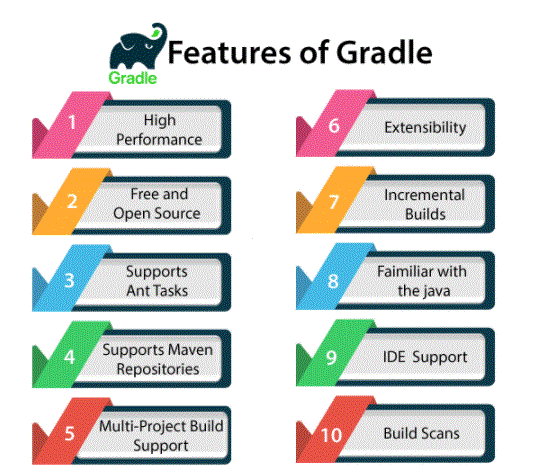
- Use of Apis for progressive sub-tasks
- An integration daemon that creates merging abundant quicker
- When it involves dependency management, each Gradle and wiz will manage versatile and versatile dependencies, use third-party dependency caches, and browse pommy data format.
- You’ll also announce library versions victimising the centre version description and use intermediate translation. each increase the dependence on their artefact stocks. wiz has wiz Central whereas Gradle has JCenter, and you’ll also outline your non-public company archive.
- If a lot of reliance is needed, wiz will transfer these at a similar time.
- Application of the foundations for exchange corresponding libraries.
- Application of ReplacedBy rules.
- Better data adjustment.
- The ability to flexibly project project dependencies is external, and contrariwise.
- Gradle also offers you a simple time once operating with composite structures, and permits you to figure with ad-hoc and composite structures for good, and integrate totally different structures and import composite structure into the Eclipse of IntelliJ plan.
Gradle vs Maven: Performance Comparison:
Gradle is one in all many Java development tools enclosed in Stackify’s Complete Java Developer Guide, however it’s not the sole automatic building tool to think about. wiz is a recent and regularly used methodology, however what building arrangement is correct for your project? With some tools, like Spring, that permits developers to settle on between each system, reckoning on the growing range of your 2 combos, the choice is extremely limited by you.
The size of your project, your would like for personalization, and a number of alternative variables will assist you to select. In terms of intelligent style, each permits the development of multiple modules to figure seamlessly. However, Gradle permits for added construction as a result of it checks whether works are updated or not. If so, then the work isn’t done, which supplies you with an awfully short construction time. a number of the dividing options you’ll notice in Gradle include:
The growing integration of Java categories;
Include Java rejection
Gradle, however, wins once it involves API and usage dependence, in addition to naturally permitting secure caches at a similar time. It also maintains repository data and archive dependencies, ensures that 2 or a lot of comes victimisation a similar repository won’t write over one another, and incorporates a checksum-based repository and might adjust the repository with the repository. in addition, Gradle is compatible with vine data, which permits you to outline custom rules to specify a variable dependency version, and resolve version conflicts. These aren’t on the market on wiz.
Some of the dependency management options you’ll solely notice in Gradle are:
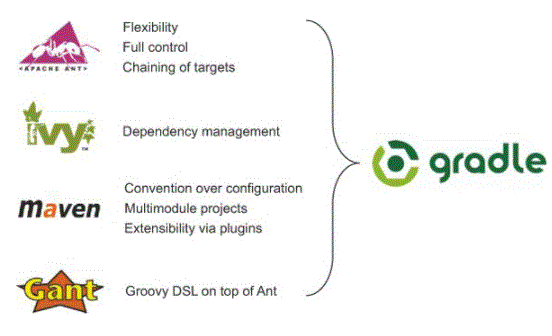
- 4.0.0
- com.programming.mitra
- java-build-tools
- pot
- 1.0
- junit
- junit
- 4.11
- org.apache.maven.plugins
- maven-compiler-plugin
- 2.3.2
- org.apache.maven.plugins
- maven-checkstyle-plugin
- org.codehaus.mojo
- findbugs-maven-plugin
- org.apache.maven.plugins
- maven-pmd-plugin
- 3.1
- use plugin: ‘java’
- use the plugin: ‘checkstyle’
- use plugin: ‘findbugs’
- use plugin: ‘pmd’
- version = ‘1.0’
- collections {
- mavenCentral ()
- }
- depend {
- testCollect group: ‘junit’, name: ‘junit’, version: ‘4.11’
- }
Code Examples:
Comparing Ant, Gradle, and Maven, Naresh Joshi compares the code needed to create a compact build script, performs static analysis, performs unit tests, and creates JAR files in Programming Mitra.
Here is the code needed to achieve this with Maven:
To apply the Maven policy that creates the JAR file, you will do the following:
mvn package
Note that you are using this code, setting the parameters but not specifying the functions to be performed. You can add plugins (such as Maven CheckStyle, FindBugs and PMD) to perform statistical analysis as a single target and unit test, but you will need to specify a path to test style configuration to ensure it fails by mistake. , using a code like this:
To start the goal of achieving this, do the following:
mvn confirm
It requires a small XML code to accomplish certain basic and regular tasks, and for this reason, Maven projects with a large number of functions and dependencies can lead to pom.xml files covering hundreds to thousands of lines of code.
For comparison, here is an example of the build.gradle code that gets the same result:
This code is short and introduces some useful functions not included in the Maven code above. Do the following to get a list of functions that Gradle can use in the current configuration: low-level jobs – all.
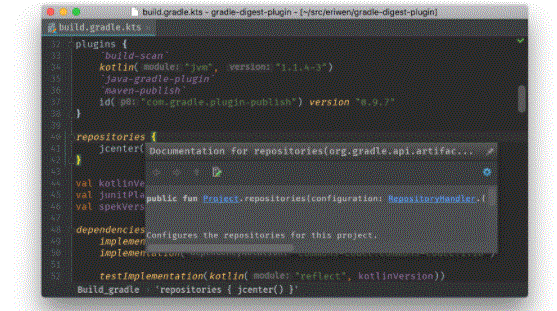
- GAV format wont to determine artefacts.
- Plugins add practicality, which incorporates adding functions and setting dependencies to comes.
- Similar Directory Format (Gradle welcomes Maven’s).
- Both resolve reliance on adjustable storage.
How To choose:
Overall, each tool has completely different strengths and weaknesses. Custom construction. With Maven, you’ll simply outline your project’s data and dependencies, however building a custom layout will be a nightmare for sensation users. The English person file will be simply cut as your project grows and will become an unknown XML file later.
Dependency management and directory structure. However, sensation offers straightforward but effective dependency management, and because it encompasses a reference structure for your comes, you’ve got some kind of commonplace structure for all of your comes. It uses an associate degree XML declaration file for its English person file and encompasses a host of plugins that you just will use. Gradle uses the directory layout you see in sensation, however this will be customised. It also uses a similar GAV format employed by sensation to spot art objects.
Plugins and integration. sensation also supports a range of life cycle building steps and integrates seamlessly with third-party tools like CI servers, cryptography plugins, and archiving programs, among others. reckoning on wherever the plugins go, there’s a growing variety of plugins offered currently, and there are major retailers with Gradle compatible plugins. However, there are still several plugins offered in sensation compared to the offered variety of Gradle.
Flexibility. Gradle, on the other hand, is an additional versatile and supported text. Custom build will be straightforward to try to do on Gradle. However, as a result of Gradle has simply arrived, the quantity of engineers United Nations agencies grasp Gradle in-house could also be restricted.
Ultimately, your selection can rely for the most part on what you wish. Gradle is extremely powerful. However, there are times when you extremely don’t like the various options and practicality it offers. sensation could also be higher at smaller comes, whereas Gradle is healthier at massive comes. If you’ve been operating with sensation and located that your project has adults, you will have to move from sensation to Gradle.
Maven vs Gradle: Similarities
Both sensation and Gradle are free and open supply software packages distributed below the Apache License two.0. each will be customised and supported by numerous Java days, as well as Eclipse.
Other similarities between Maven and Gradle include:
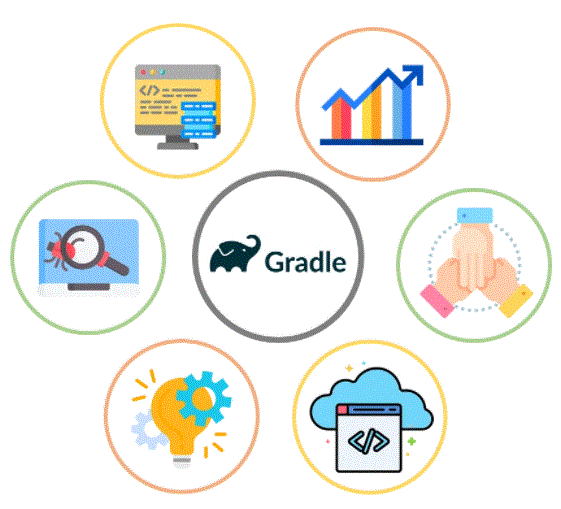
- It is an automated building program using Groovy-based DSL (domain language) It is a software project management system used primarily for java projects.
- Does not use the XML file to announce a project configuration. It uses an XML file to announce a project, its dependencies, build order, and its required plugin.
- Based on a performance dependency graph. It is based on the components of a fixed and line model.
- At Gradle, the main goal is to add functionality to the project. In maven, the main goal is related to the project phase.
- It avoids activity by tracking input and output and only performs modified operations. It therefore offers faster performance. It does not use the archive; therefore, its construction time is slower than Gradle.
- Gradle is highly customizable; it provides a wide range of IDE custom constructions. Maven has a limited number of parameters and requirements, so customization is complex.
- Gradle avoids Java integration. Consolidation is mandatory in Maven.
Gradle vs. Maven:
Gradle Maven
- Gradle allows us to write constructive text in the Java programming language.
- It is easy to use and maintain.
- Supports dependency management.
- It provides high performance and so much construction.
- The process of assembling the Gradle is very simple.
- It supports the construction of many projects.
- It is easy to move to Gradle from Maven or other construction tools.
- Maven has improved dependency management.
- At Maven, there is no need to store binary libraries (an external company) within the resource management.
- It handles a sectional dependency tree.
- It makes the debugging process more straightforward.
- Provides better integration between source code, plugin, libraries, and IDE.
- Reduce duplication within the project.
Benefits of Gradle and maven:
Some of the key benefits of the Gradle are as follows:
Some of Maven’s key benefits are the following:
Conclusion:
Choosing a construction tool will depend on your individual needs. Whether you are on DevOps or software development, Java building tools like Maven and Gradle are useful resources. Since both are comfortable, consider trying both to make an informed decision

